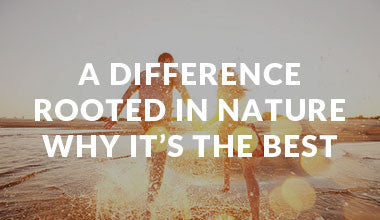Choose Sunscreen Carefully, Many Damage Coral Reefs
The most common UVA filter is Oxybenzone and is in over 70% of sunscreens, Oxybenzone is a very fine substance that penetrates the skin, gets into the bloodstream and acts like estragon in the body. It can trigger allergic reactions has been rated as a moderately high health hazard by the Environmental Working Group. Oxybenzone is also the most commonly detected UV filter in marine water samples and considered is a marine hazard. Oxybenzone leaches the coral of it's nutrients and bleaches it white. It can also disrupt the development of fish and other wild life.
UV Filters can reach the marine environment in seawater, rivers and lakes directly through water activities or from waste treatment plants. (WTP) Showering, laundering, swimming in chlorinated swimming pools or even urinating are sources of sunscreen components discharged to the WTP where they are not completely removed (li et al., 2007).
What to look for in a sunscreen:
Take the time to read the ingredients and avoid sunscreen that contain oxybenzone, nano particales and parabens.
Buy a broad spectrum sunscreen with an SPF 30 or SPF 50. The new Australian/New Zealand standard limits SPF claims to 50 in line with other international standards. Above SPF 50+ the additional protection is very small. High SPF values are a problem as people use them to stay out longer in the sun during which time they receive large doses of radiation.
Look for a sunscreen that is highly water resistant and for verified product reviews as not all water resistant sunscreens are equal. Sunscreen's receive the water resistant rating with exposure to water with moderate exercise only. The water resistant time stated on products is also unreliable as sunscreens made in Europe or the USA can only claim 80min water resistant even if it provides 4+ hours of protection.
Try to find a sunscreen that is also biodegradable as this is more likely to be reef friendly. There are no specific test to determine if a sunscreen is reef friendly but sunscreens that promote they are biodegradable must have certification of this from approved laboratories.
Also avoid sunscreens that contain Vitamin A (retinyl palmitate) as scientists have found that vitamin A can spur excess skin growth, known as hyperplasia and that in sunlight retinyl palmitate can form free radicals that damage DNA (NTP 2000).
Avoid sunscreens that contain insect repellents as they have has been shown to reduce the effectiveness of the UV fillers.
Finally Select lotions rather than sprays as it is easier to get an even coverage and they are generally kinder on the environment.
Further research is needed into the impact of sunscreens on the marine environment but we do know they are having an impact so select your sunscreen brand carefully.
Remember where possible cover up, if you can't avoid the midday sun put on a sun hat and sunglasses, wear a wetsuit or a long sleeved rash vest when swimming, apply your well considered sunscreen purchase generously 20 minutes prior to UV exposure, use lipbalm and check your skin regularly and have anything unusual seen immediately.
Author: Katherine Greer, Managing Director of Hydro Surf. When I started surfing 30+ years ago, there were no water resistant sunscreens on the NZ market. I sourced Aloe Up, a sports sunscreen made specifically for active people, to protect myself and my children while surfing. Hydro Surf now distributes Aloe Up in New Zealand. Aloe Up SPF 30 and SPF 50 lotions have the biodegradable certification and are reef friendly. For more information go to www.aloeup.co.nz.




